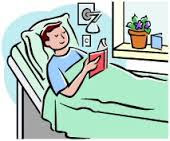As to hospitalization, it is very expensive, the risk of a medical error is real, hospital acquired infections are all too common and the patient frequently leaves feeling unsatisfied.
But do all those individuals admitted necessarily need hospitalization? Today the answer is generally yes. But tomorrow that could and probably could change, for the better. What if many of the attributes of the hospital could be brought to the home? Attributes like nursing care, electronic monitoring of vital signs and intravenous therapy, to name just a few. There is really no reason why the home cannot serve this purpose for some selected patients today. When it does, the patient remains in familiar, comforting surrounding; the chance for errors and infections can go down and the costs of care can decline substantially. The critical question, of course, is whether the clinical outcomes are just as good, or possibly even better.
Enter an innovative and exceptionally transformational approach. Think of it perhaps as a virtual hospital that maximizes the capacity to use today’s digital technology.
Embryonic at best in the United States, there are multiple examples worldwide as recently reviewed in the New England Journal of Medicine.The basic idea is to follow emergency room evaluation (or even doctor’s office evaluation) with the decision to admit to the hospital or to use hospital at home care. Not all patient conditions are appropriate for home care of course but among those that are often appropriate: exacerbation of heart failure and chronic obstructive pulmonary disease, community acquired pneumonia, asthmatic attacks, deep vein thrombosis and possibly pulmonary embolus and deep-seated skin or soft tissue infections.
One recent studycompared 50 patients treated at home for a 34 day period to a similar group treated in the hospital after initial evaluation in the emergency room or observation unit. At the conclusion of the study period, the hospital at home patients had greater satisfaction with multiple query categories and met standard quality measures for their specific diagnoses. Those patients were less likely to need readmission over the ensuing ninety days.
With positive results nationally and internationally, why hasn’t the hospital at home model become commonplace? I suspect it has multiple causes not least of which is physician concern. Medical professionals are loath to make dramatic changes when the current system works, or at least works reasonably well for most episodes. Add in, of course, that the fee-for-service reimbursement model for physicians and hospitals discourages interest. Only when the physician can be paid for virtual/digital care approaches and the hospital benefits financially from fewer admissions will real interest develop.
Innovative? Certainly. Transformative? Definitely. Makes sense from a quality of care perspective? Yes. Leads to greater patient satisfaction? Yes. Means fewer safety lapses and care associated infections? Perhaps. Reduces unplanned remission rates? Probably. Costs less? Yes.
Home hospitalization could be one step in improving the American dysfunctional healthcare delivery system with improved care, greater satisfaction and reduced costs – the Triple Aim
This was first published at Medical Economics December 19, 2016



